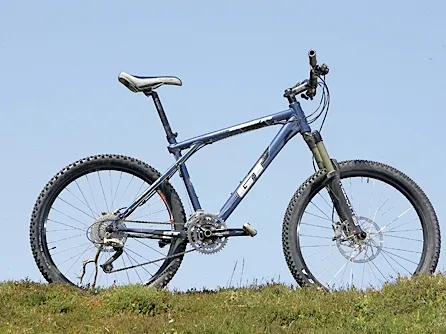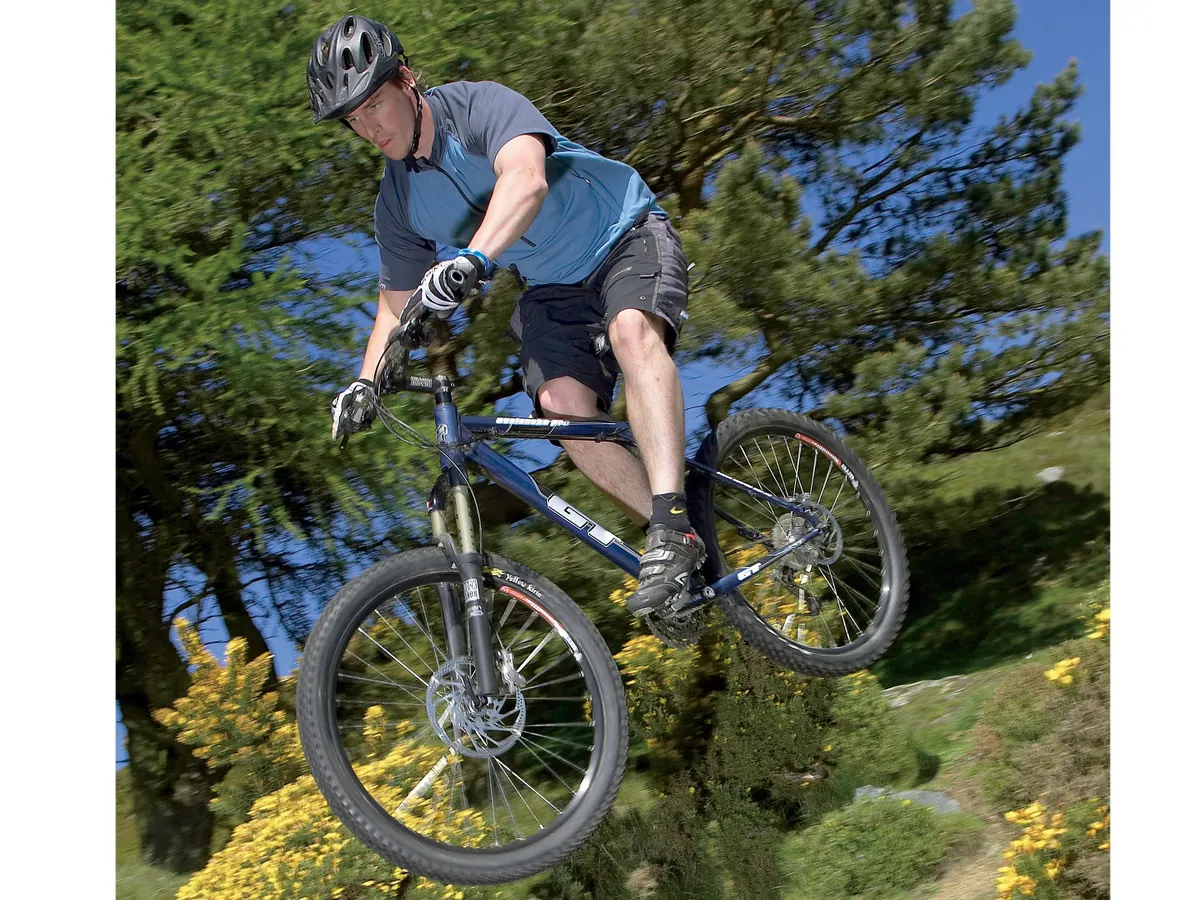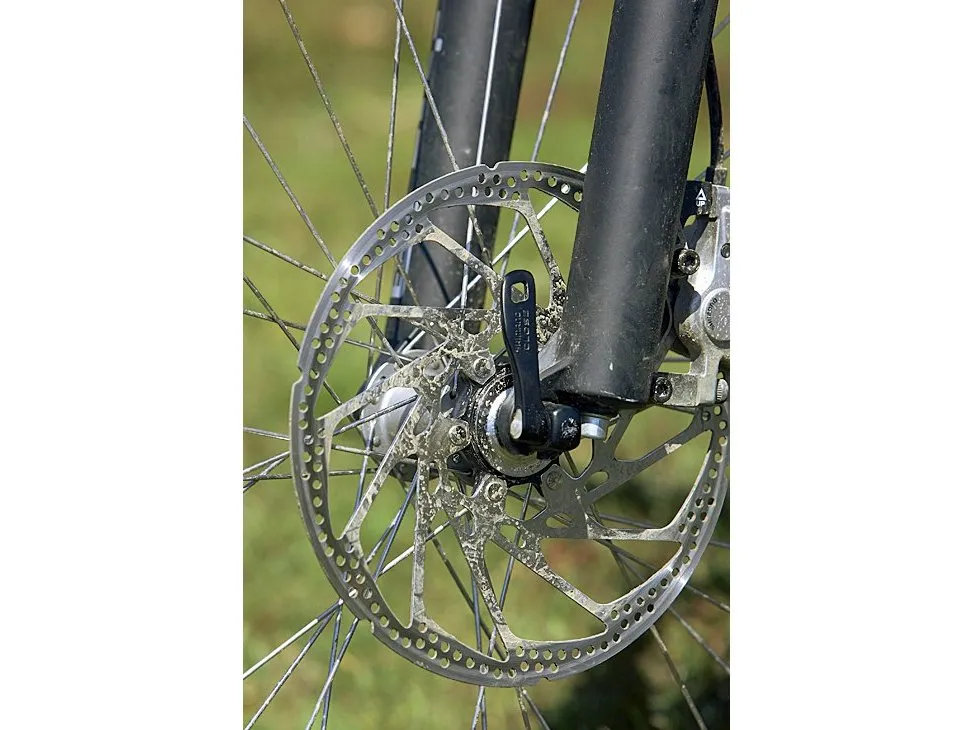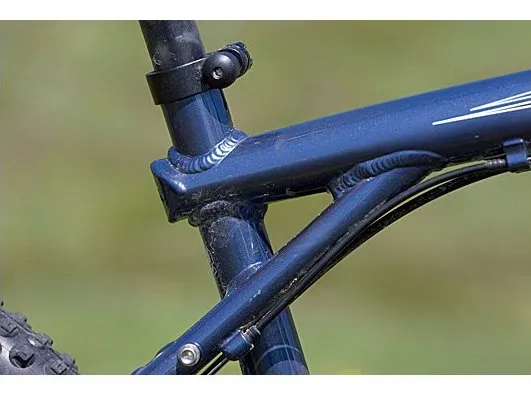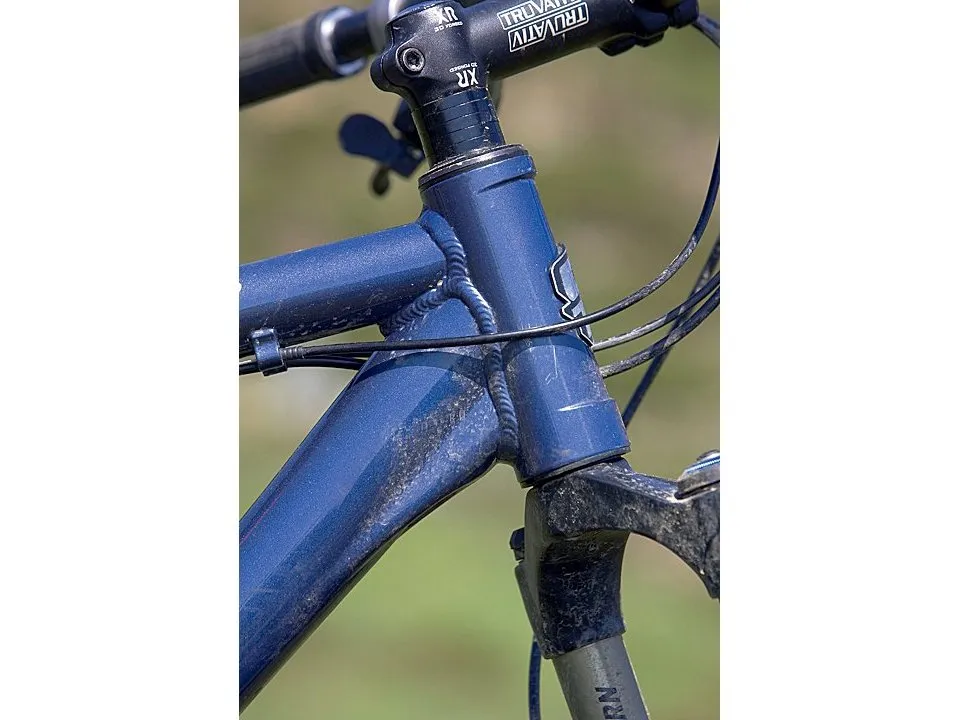Now here's an oddity, a cross-country race bike that has evolved into a hard-hitting all mountain hardtail. The Avalanche Pro wasn't designed from the outset for extreme XC, but has gradually morphed into a long travel machine built for high speed technical trails.
The Frame
It's a testament to the soundness of the original GT triple triangle design that it's still around at all, let alone forming the basis of a bike that's destined for tough and rocky trail riding. With modern tube technology there's no real need for the supposed extra strength and stiffness of the extended seatstays (which form the tiny third triangle), but the design has become a classic in its own lifetime. If it works, why change it?
Next to the more recently designed free-ride and dirt jump-inspired frames, the GT looks positively anorexic - a hefty cross-ovalised down tube with a tidy, hydroformed box gusset up front is the most noticeable concession to strength and stiffness. An externally butted head tube houses an internal headset and the top tube is pierced, in classic GT fashion, by the seat tube, and capped with an embossed GT logo. At the rear, surprisingly slender stays are welded to intriguingly minimalist dropouts and the seatstays, of course, curve past the seat tube on their way to meet the top tube.
The primary source of the Avalanche Pro's new-found burliness is GT's choice of fork. Up to 130mm (5in) of plush, controllable travel puts this bike squarely in the long travel category and gives it, in theory at least, the same big-hit capability as some of its beefier-framed competitors. Tyre clearance around the brace is marginal with the 2.3in Tioga Yellow Kirin fitted, but you'll appreciate the extra air volume on fast, dry and rocky trails.
The Equipment
Shimano Deore XT rear mech, WTB rims, SDG saddle, Truvativ bar, stem and chainset... the spec list reads like a who's who of upper midrange components. We like the choice of 2.1in rear and 2.3in front tyres, which gives a good compromise between weight and shock absorption - although you'd be hard pressed to fit a 2.3in tyre between the rear stays anyway. Shimano's Deore LX hydraulic discs also provide great gobs of stopping power with the extra reassurance of a dinner plate-sized 203mm (8in) rotor up front. On a bike that's likely to be ridden hard and fast, the bigger rotor means better cooling and more reliable power on long descents.
the GT's barge-like responses inspire neither confidence nor enthusiasm
The ride
You can tell a surprising amount about the way a bike will handle on the trail with a simple ride around a car park. If something feels odd, clunky or out of place during a few quick circuits of flat, hard-packed gravel, there's a good chance it will feel equally odd on rocks, roots and mud. So when we turned a corner for the first time on the GT and it didn't want to straighten up again, we paid attention, and had a closer look...
Floppy steering - where the bar feels reluctant to return to the centre after a turn - can be caused by a number of factors. In the case of the Avalanche, an extremely slack head angle (the angle of the head tube), combined with a stem that's arguably a tad overlong, seems to be the culprit. Long travel bikes need a fairly slack head angle (less vertical) so that the fork can move through its travel without creating twitchy steering in situations where riders most need stability, but the GT's 66.5-degree head angle is a couple of degrees slacker than we would expect to see on a trail riding bike, and the long stem simply exacerbates the situation. This geometry, combined with the suspiciously slack seat angle, means that the Avalanche Pro gives every impression of being a short travel frame with a long travel fork bolted on the front, and that's not a good way to build a long travel bike.
It's not all bad news though - an efficiently stretched riding position and reasonable overall weight enables good climbing, and the chunky tyres and smooth efficiency of the fork make light work of trail detritus and big hits. But mountain bikes need to be able to turn as well as pedal in a straight line, and the GT's barge-like responses inspire neither confidence nor enthusiasm. We like the idea of fitting a long travel fork to a classic hardtail but the geometry needs to be tweaked to fit. Back to the drawing board please, GT.
